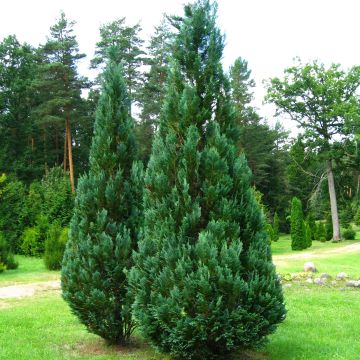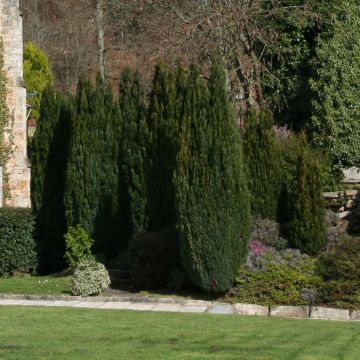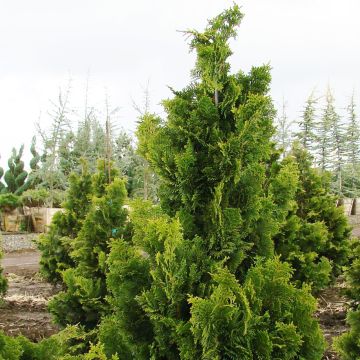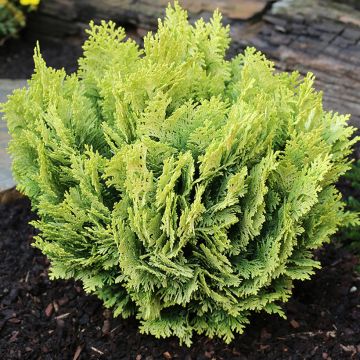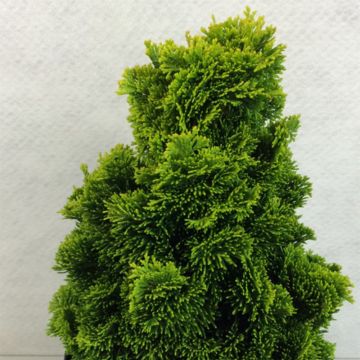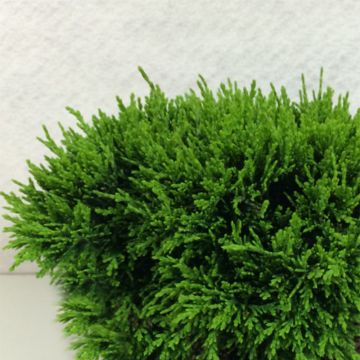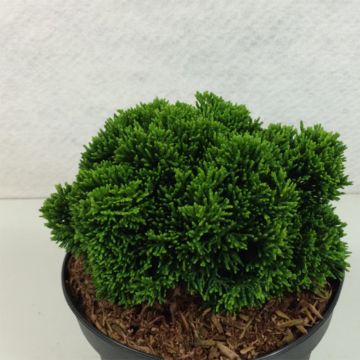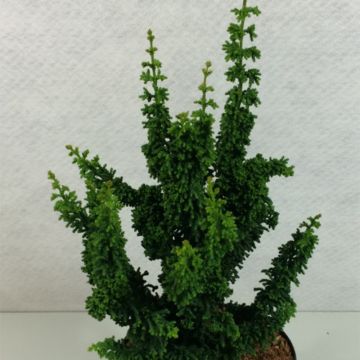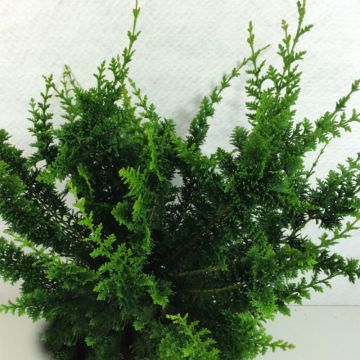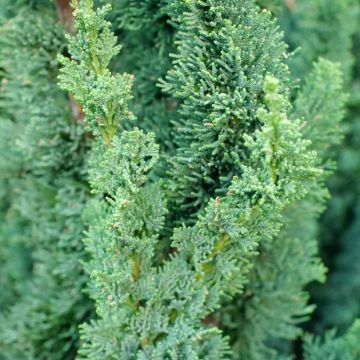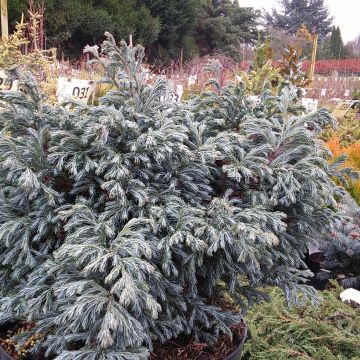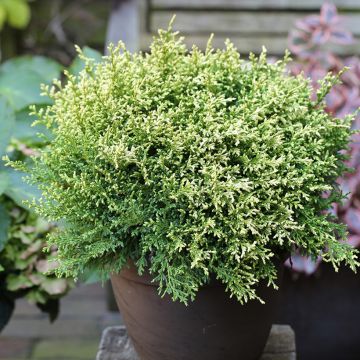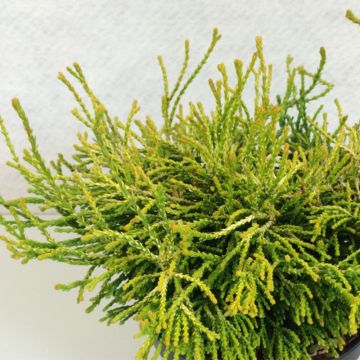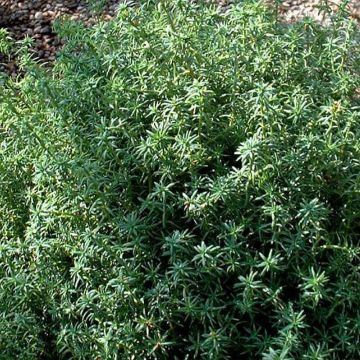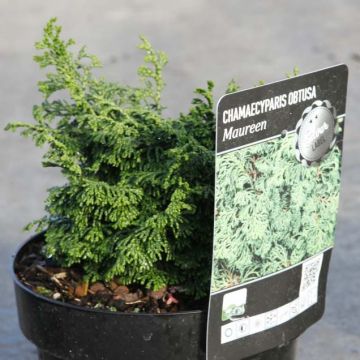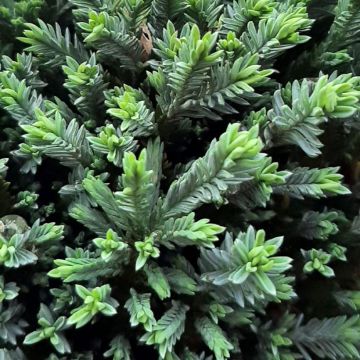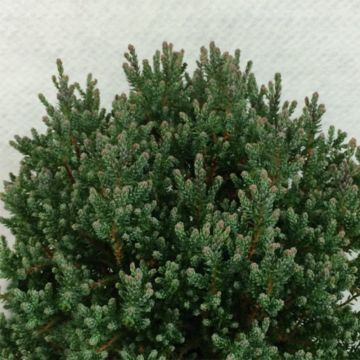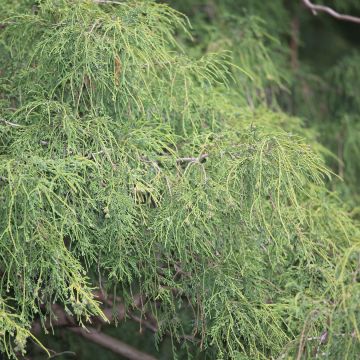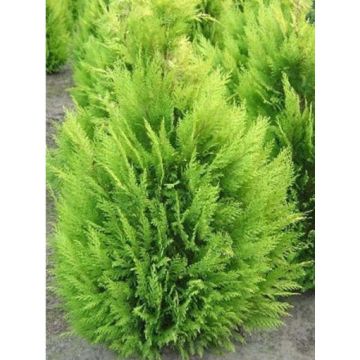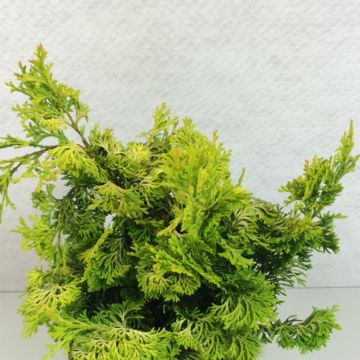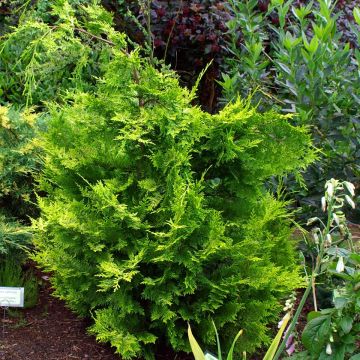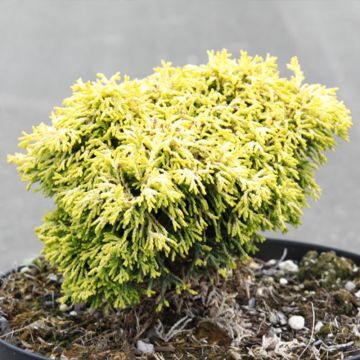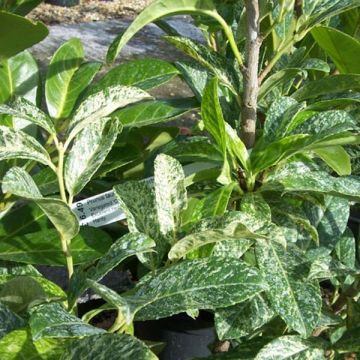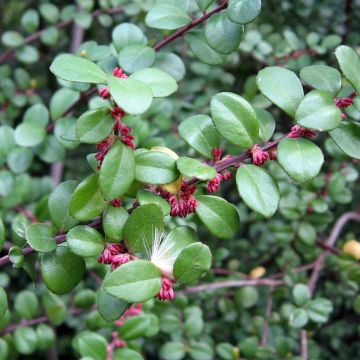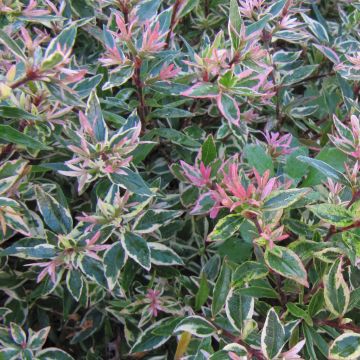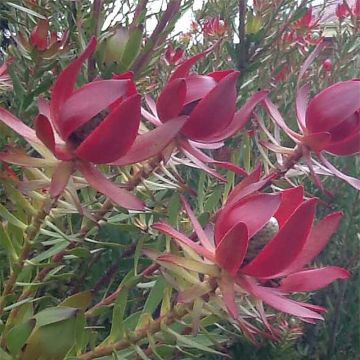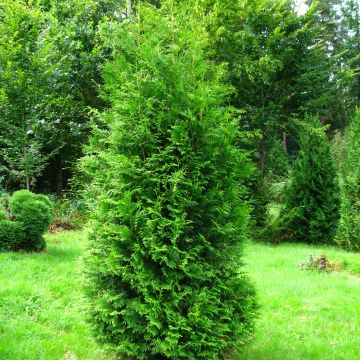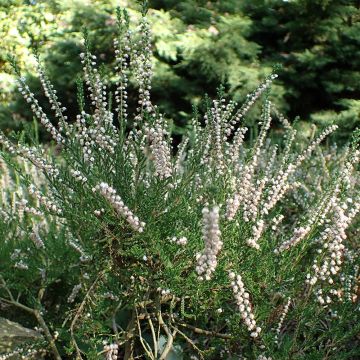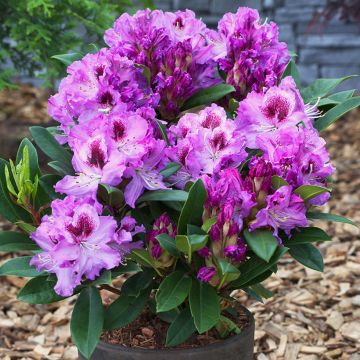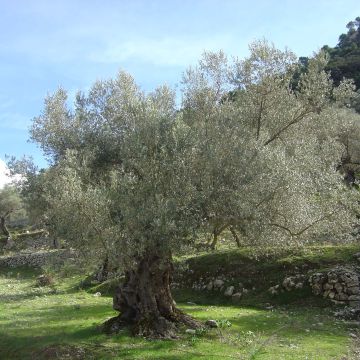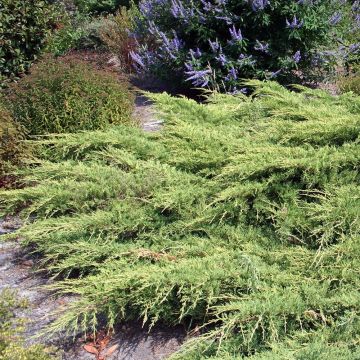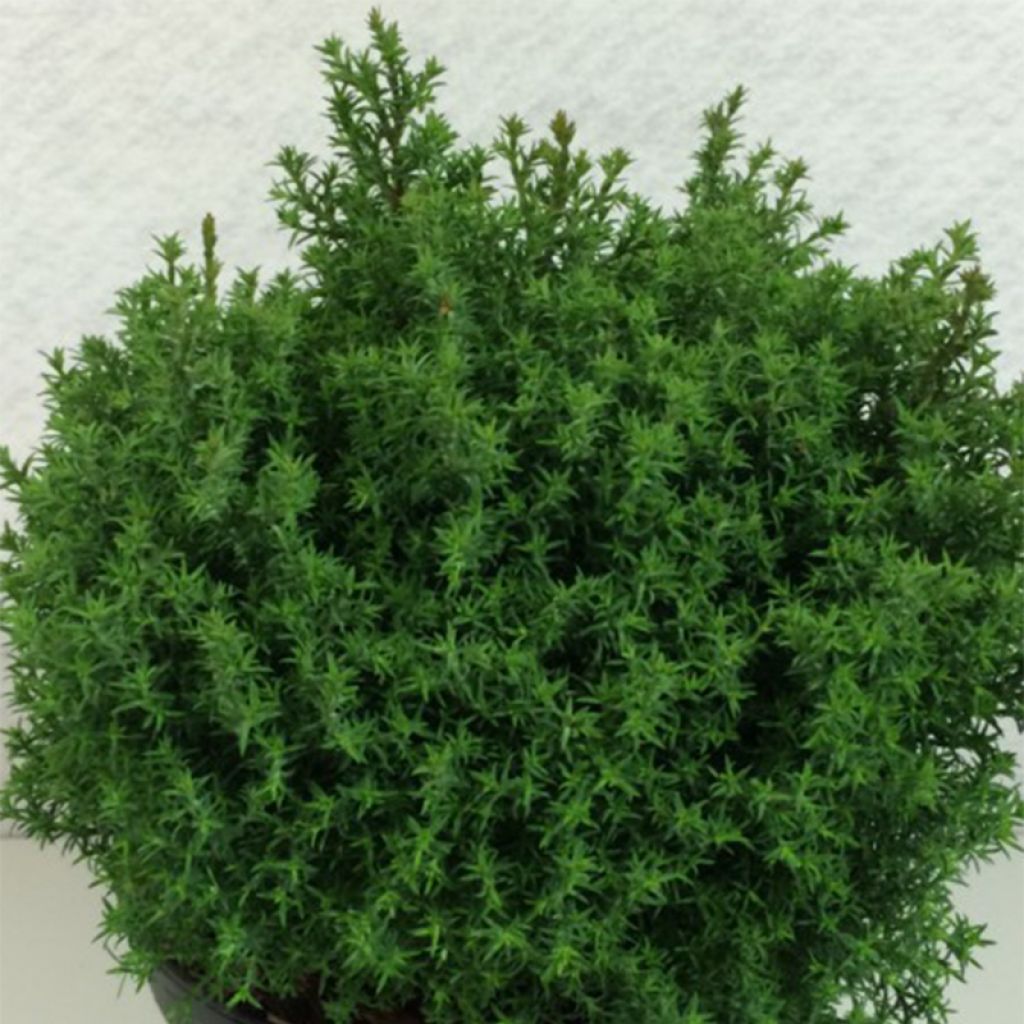

Chamaecyparis obtusa Wissel - Hinoki Cypress
Chamaecyparis obtusa Wissel - Hinoki Cypress
Chamaecyparis obtusa Wissel
Hinoki Cypress, Japanese Cypress, Hinoki False Cypress
Why not try an alternative variety in stock?
View all →This plant carries a 24 months recovery warranty
More information
We guarantee the quality of our plants for a full growing cycle, and will replace at our expense any plant that fails to recover under normal climatic and planting conditions.
From €5.90 for pickup delivery and €6.90 for home delivery
Express home delivery from €8.90.
Does this plant fit my garden?
Set up your Plantfit profile →
Description
Chamaecyparis obtusa Wissel is a beautiful novelty. This dwarf variety of false cypress forms a regular and very compact bush, displaying superb foliage, a very dense and delicate grey-blue colour, turning bronze-purple in winter. This lovely bush will not exceed 50cm (19.7in) in 10 years and will reach 1m when fully grown. This small conifer will bring a touch of softness and elegance to small gardens, rockeries or pots. It requires an acidic, deep and well-drained soil to thrive.
Also called Hinoki cypress from Japan and capable of reaching 50m (164ft) in height in its natural environment, the false cypress, belonging to the family of cypress trees, is mainly used for making lacquered furniture and for the construction of numerous buildings such as palaces in its native Japan. This dwarf variety, 'Wissel', with a round habit and very compact growth, grows slowly to form a very regular ball, as wide as it is tall. Its growth is very slow. It bears branches with fine complex branching, covered with leaves shaped like tiny scales, giving the plant a mossy appearance. Initially grey-blue, the foliage takes on a more bronze-purple colour in winter, due to the cold.
Chamaecyparis obtusa 'Wissel' is ideal for pot cultivation on a terrace or in small gardens thanks to its slow growth and small size. With its round and regular shape, it will work wonders in your rockeries. As it appreciates acidic soils, it will accompany small camellias, rhododendrons, and azaleas. The architectural qualities of dwarf conifers naturally impose themselves in the design of a contemporary garden, which prefers the aesthetics of shapes, silhouettes, and textures to flowers. These plants structurally and durably shape a bed, mark the paths and border the terrace, easily replacing the strong presence of trimmed boxwood. They serve as a setting for small roses, peonies, or tousled grasses with very complementary forms. They can also be associated with bushes or ground cover plants such as aubrietas, ceraistes, as well as flowering bushes. The key is to play with volumes and colours.
Report an error about the product description
Chamaecyparis obtusa Wissel - Hinoki Cypress in pictures
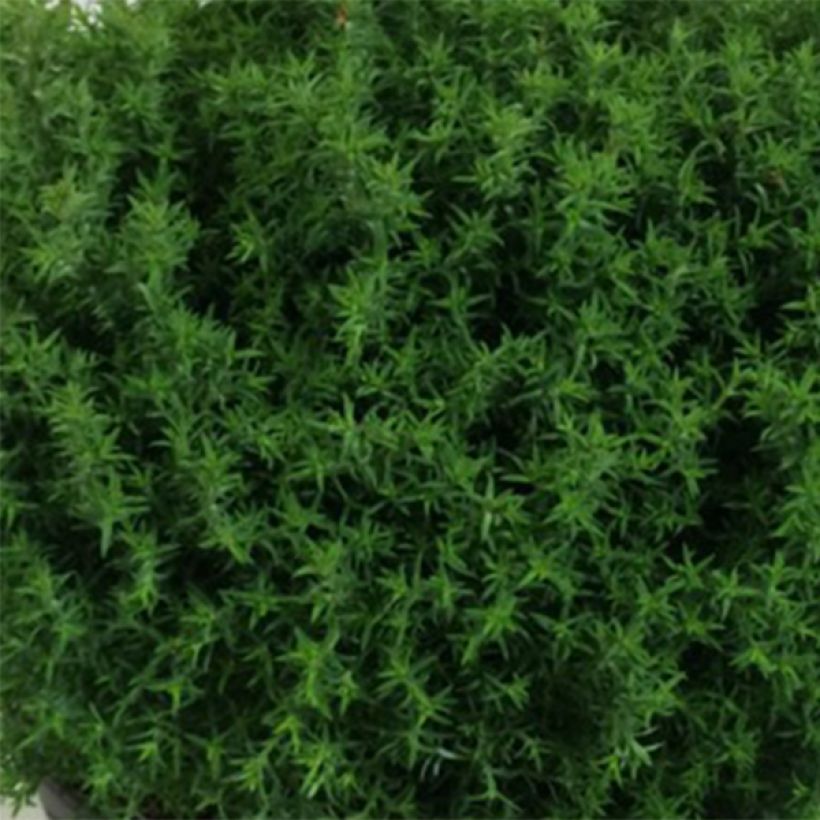

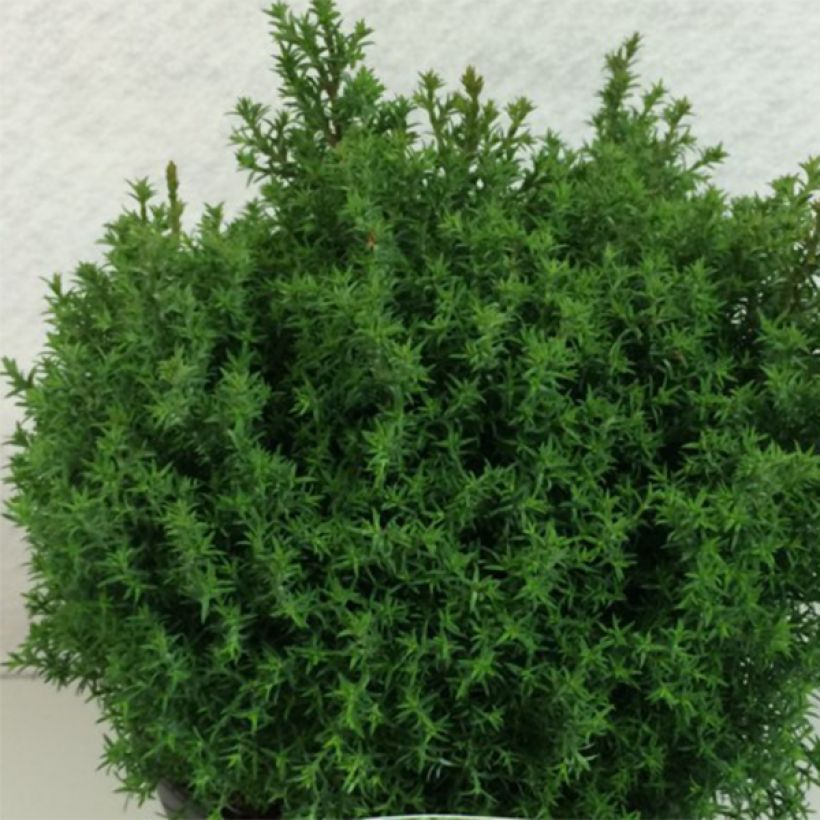

Plant habit
Foliage
Botanical data
Chamaecyparis
obtusa
Wissel
Cupressaceae
Hinoki Cypress, Japanese Cypress, Hinoki False Cypress
Cultivar or hybrid
Other Chamaecyparis
Planting and care
Chamaecyparis obtusa 'Wissel' should be planted from September to November and from February to June in rich and deep, well-drained soil, and definitely acidic. An ericaceous soil will be very suitable. Choose a sunny or semi-shaded location, sheltered from prevailing winds. Soak the rootball well before planting. Add organic fertilizer at planting and water generously in the first years. Apply a special conifer fertilizer every year in April and weed the soil in summer. It does not require pruning. While the tender shoots of young plants can be regularly pruned, for example to form a hedge, care must be taken never to prune into old wood on mature specimens as they will not regrow.
Planting period
Intended location
Care
This item has not been reviewed yet - be the first to leave a review about it.
Evergreen shrubs
Haven't found what you were looking for?
Hardiness is the lowest winter temperature a plant can endure without suffering serious damage or even dying. However, hardiness is affected by location (a sheltered area, such as a patio), protection (winter cover) and soil type (hardiness is improved by well-drained soil).

Photo Sharing Terms & Conditions
In order to encourage gardeners to interact and share their experiences, Promesse de fleurs offers various media enabling content to be uploaded onto its Site - in particular via the ‘Photo sharing’ module.
The User agrees to refrain from:
- Posting any content that is illegal, prejudicial, insulting, racist, inciteful to hatred, revisionist, contrary to public decency, that infringes on privacy or on the privacy rights of third parties, in particular the publicity rights of persons and goods, intellectual property rights, or the right to privacy.
- Submitting content on behalf of a third party;
- Impersonate the identity of a third party and/or publish any personal information about a third party;
In general, the User undertakes to refrain from any unethical behaviour.
All Content (in particular text, comments, files, images, photos, videos, creative works, etc.), which may be subject to property or intellectual property rights, image or other private rights, shall remain the property of the User, subject to the limited rights granted by the terms of the licence granted by Promesse de fleurs as stated below. Users are at liberty to publish or not to publish such Content on the Site, notably via the ‘Photo Sharing’ facility, and accept that this Content shall be made public and freely accessible, notably on the Internet.
Users further acknowledge, undertake to have ,and guarantee that they hold all necessary rights and permissions to publish such material on the Site, in particular with regard to the legislation in force pertaining to any privacy, property, intellectual property, image, or contractual rights, or rights of any other nature. By publishing such Content on the Site, Users acknowledge accepting full liability as publishers of the Content within the meaning of the law, and grant Promesse de fleurs, free of charge, an inclusive, worldwide licence for the said Content for the entire duration of its publication, including all reproduction, representation, up/downloading, displaying, performing, transmission, and storage rights.
Users also grant permission for their name to be linked to the Content and accept that this link may not always be made available.
By engaging in posting material, Users consent to their Content becoming automatically accessible on the Internet, in particular on other sites and/or blogs and/or web pages of the Promesse de fleurs site, including in particular social pages and the Promesse de fleurs catalogue.
Users may secure the removal of entrusted content free of charge by issuing a simple request via our contact form.
The flowering period indicated on our website applies to countries and regions located in USDA zone 8 (France, the United Kingdom, Ireland, the Netherlands, etc.)
It will vary according to where you live:
- In zones 9 to 10 (Italy, Spain, Greece, etc.), flowering will occur about 2 to 4 weeks earlier.
- In zones 6 to 7 (Germany, Poland, Slovenia, and lower mountainous regions), flowering will be delayed by 2 to 3 weeks.
- In zone 5 (Central Europe, Scandinavia), blooming will be delayed by 3 to 5 weeks.
In temperate climates, pruning of spring-flowering shrubs (forsythia, spireas, etc.) should be done just after flowering.
Pruning of summer-flowering shrubs (Indian Lilac, Perovskia, etc.) can be done in winter or spring.
In cold regions as well as with frost-sensitive plants, avoid pruning too early when severe frosts may still occur.
The planting period indicated on our website applies to countries and regions located in USDA zone 8 (France, United Kingdom, Ireland, Netherlands).
It will vary according to where you live:
- In Mediterranean zones (Marseille, Madrid, Milan, etc.), autumn and winter are the best planting periods.
- In continental zones (Strasbourg, Munich, Vienna, etc.), delay planting by 2 to 3 weeks in spring and bring it forward by 2 to 4 weeks in autumn.
- In mountainous regions (the Alps, Pyrenees, Carpathians, etc.), it is best to plant in late spring (May-June) or late summer (August-September).
The harvesting period indicated on our website applies to countries and regions in USDA zone 8 (France, England, Ireland, the Netherlands).
In colder areas (Scandinavia, Poland, Austria...) fruit and vegetable harvests are likely to be delayed by 3-4 weeks.
In warmer areas (Italy, Spain, Greece, etc.), harvesting will probably take place earlier, depending on weather conditions.
The sowing periods indicated on our website apply to countries and regions within USDA Zone 8 (France, UK, Ireland, Netherlands).
In colder areas (Scandinavia, Poland, Austria...), delay any outdoor sowing by 3-4 weeks, or sow under glass.
In warmer climes (Italy, Spain, Greece, etc.), bring outdoor sowing forward by a few weeks.

































